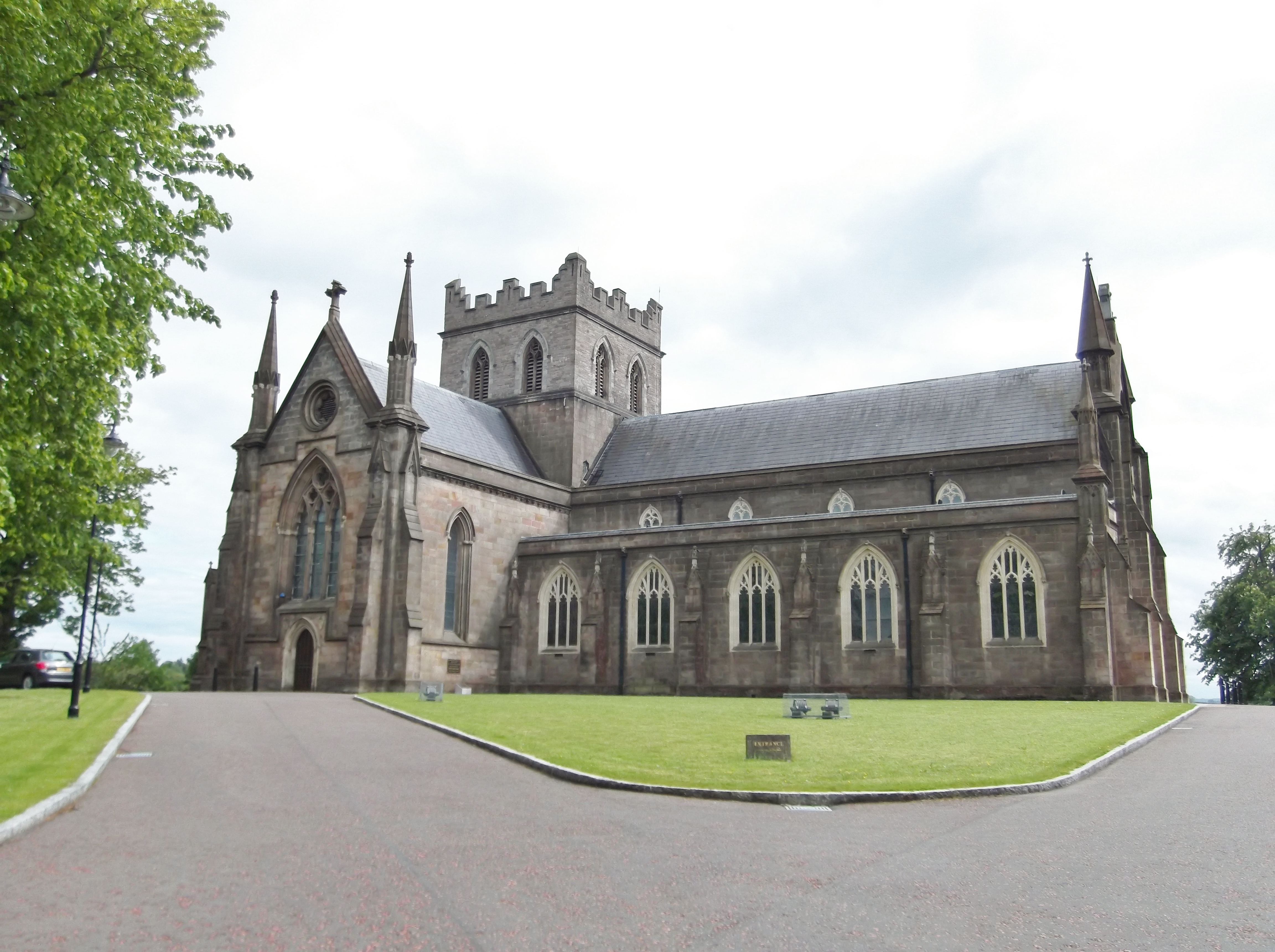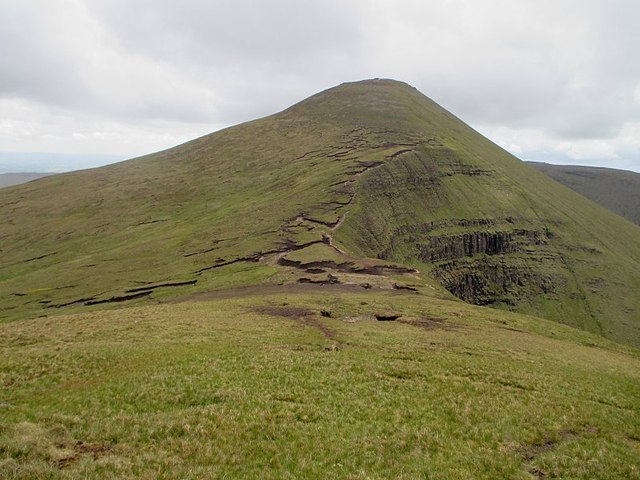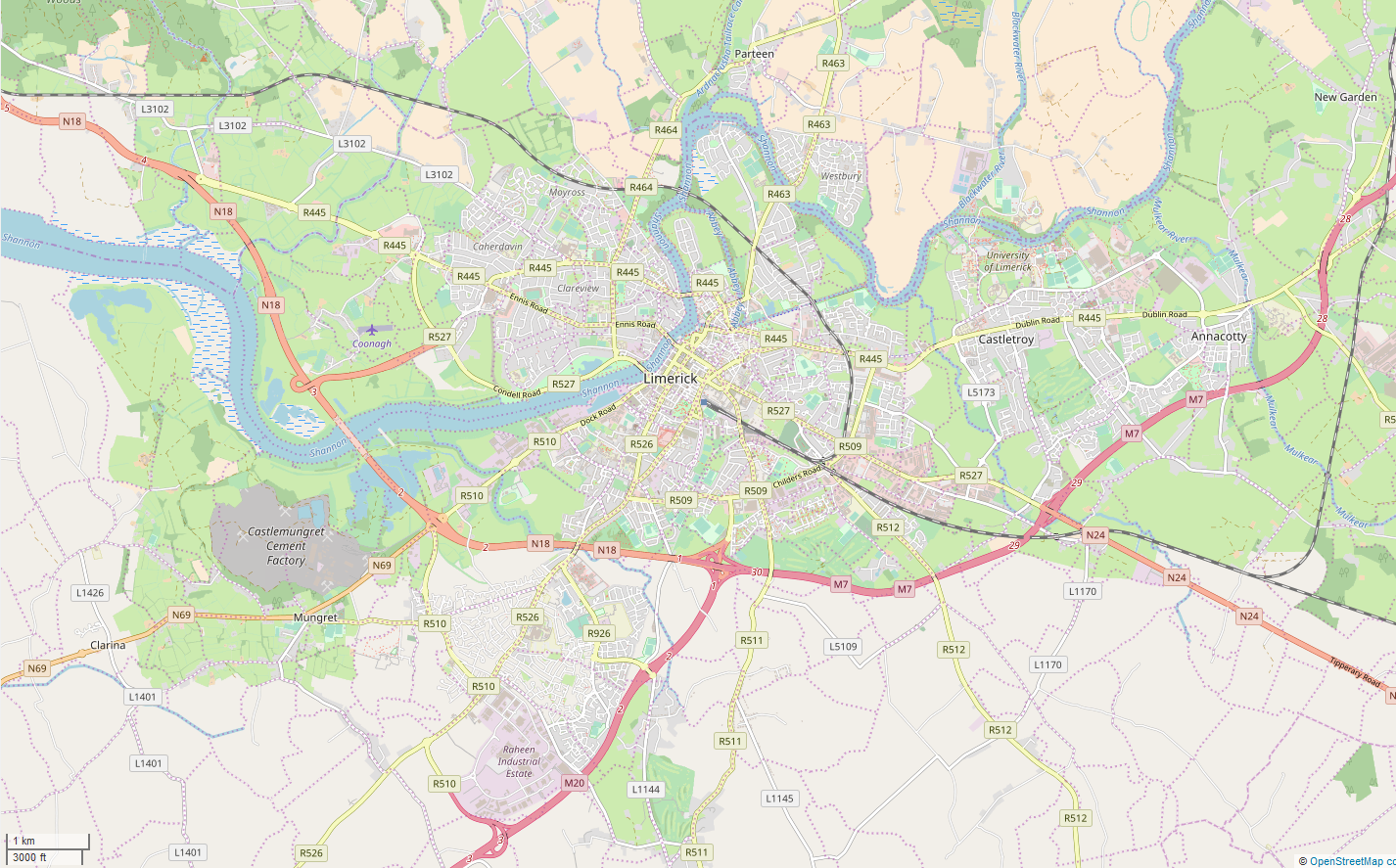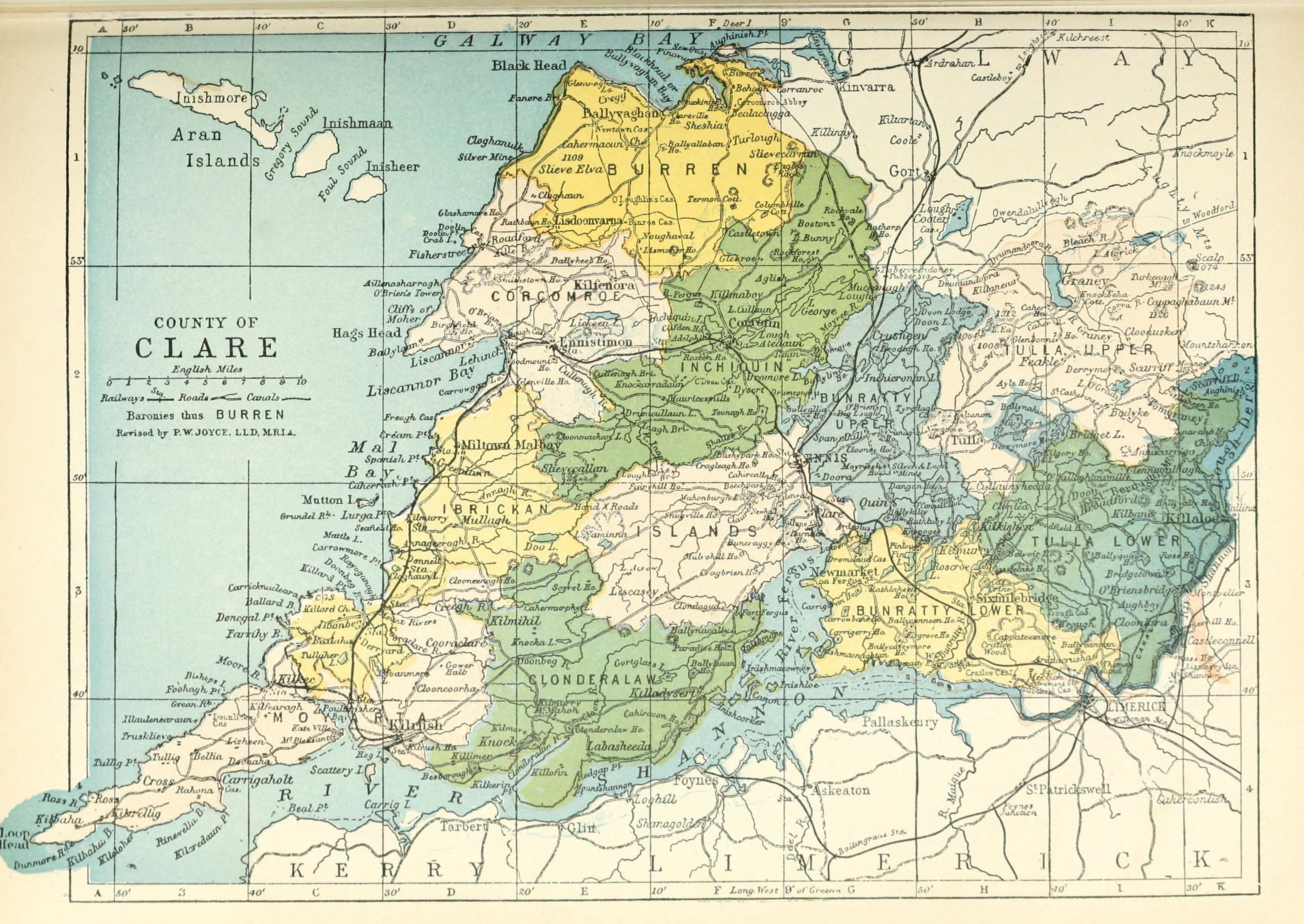|
Toirrdelbach Ua Briain
Toirdhealbhach ua Briain (old spelling: Toirdelbach ua Briain), anglicised ''Turlough O'Brien'' (100914 July 1086), was King of Munster and effectively High King of Ireland. A grandson of Brian Bóruma, Toirdelbach was the son of Tadc mac Briain who was killed in 1023 by his half-brother Donnchad mac Briain. For the first forty years of his life nothing is known of Toirdelbach. It was not until the 1050s that he found allies in Connacht and in Leinster, particularly the powerful King of Leinster Diarmait mac Maíl na mBó, who would aid his claims to be ruler of Munster. It took perhaps ten years of sustained attack to remove his uncle Donnchad from power, and send him into exile, and to place Toirdelbach in power in Munster as Diarmait's faithful ally. On Diarmait's death Toirdelbach took over the reins of power, establishing himself as ruler of more than half of Ireland. While not a great military leader, he was a capable politician whose influence extended as far north as ... [...More Info...] [...Related Items...] OR: [Wikipedia] [Google] [Baidu] |
King Of Munster
The kings of Munster () ruled the Kingdom of Munster in Ireland from its establishment during the Irish Iron Age until the High Middle Ages. According to Gaelic traditional history, laid out in works such as the ''Book of Invasions'', the earliest king of Munster was Bodb Derg of the Tuatha Dé Danann. From the Gaelic peoples, an Érainn kindred known as the Dáirine (also known as Corcu Loígde and represented today in seniority by the Ó hEidirsceoil) provided several early monarchs including Cú Roí. In a process in the ''Cath Maige Mucrama'', the Érainn lost their ascendancy in the 2nd century AD to the Deirgtine, ancestors of the Eóganachta. Munster during this period was classified as part of ''Leath Cuinn and Leath Moga, Leath Moga'', or the southern-half, while other parts of Ireland were ruled mostly by the Connachta. After losing Osraige to the east, Cashel, County Tipperary, Cashel was established as the capital of Munster by the Eóganachta. This kindred ruled wit ... [...More Info...] [...Related Items...] OR: [Wikipedia] [Google] [Baidu] |
King Of Connacht
The Kings of Connacht were rulers of the ''cóiced'' (variously translated as portion, fifth, province) of Connacht, which lies west of the River Shannon, Ireland. However, the name only became applied to it in the early medieval era, being named after the Connachta. The old name for the province was Cóiced Ol nEchmacht (the fifth of the Ol nEchmacht). Ptolemy's map of c. 150 AD does in fact list a people called the Nagnatae as living in the west of Ireland. Some are of the opinion that Ptolemy's Map of Ireland may be based on cartography carried out as much as five hundred years before his time. The Connachta were a group of dynasties who claimed descent from the three eldest sons of Eochaid Mugmedon: Brion (Irish), Brion, Ailill and Fiachrae. They took their collective name from their alleged descent from Conn of the Hundred Battles, Conn Cétchathach. Their younger brother, Niall Noigiallach was ancestor to the Uí Néill. The following is a list of kings of Connacht from th ... [...More Info...] [...Related Items...] OR: [Wikipedia] [Google] [Baidu] |
Comarba Pátraic
The Archbishop of Armagh is an Episcopal polity, archiepiscopal title which takes its name from the Episcopal see, see city of Armagh in Northern Ireland. Since the Reformation in Ireland, Reformation, there have been parallel apostolic successions to the title: one in the Catholic Church and the other in the Church of Ireland. The archbishop of each Christian denomination, denomination also holds the title of Primate of All Ireland. In the Church of Ireland, the Archbishop of Armagh (Church of Ireland), archbishop is John McDowell (bishop), John McDowell, who is the ecclesiastical head of the Church of Ireland and the diocesan bishop of the Diocese of Armagh (Church of Ireland), Diocese of Armagh. He was elected as archbishop in March 2020 and translated to the role on 28 April 2020. In the Catholic Church, the archbishop is Eamon Martin, who is the ecclesiastical head of the Catholic Church in Ireland, metropolitan of the ecclesiastical province, Province of Armagh and the or ... [...More Info...] [...Related Items...] OR: [Wikipedia] [Google] [Baidu] |
Killaloe, County Clare
Killaloe ( ; ) is a small town in east County Clare, Republic of Ireland, Ireland. It lies on the River Shannon on the western bank of Lough Derg (Shannon), Lough Derg and is connected by Killaloe Bridge to the "twin town" of Ballina, County Tipperary, Ballina on the eastern bank of the lake. The Killaloe Electoral Area is one of six such areas in County Clare and returns four members to Clare County Council. Killaloe is at the center of the Killaloe, County Clare (Civil parish), Killaloe Civil parish. History The town owes its origin to a sixth-century monastic settlement founded by Saint Molua, or Lua, on an island in the Shannon 1 km downstream from the present Killaloe Bridge which later moved onto the mainland. In the tenth century it was a base for Brian Boru as it controlled the strategic crossing of the Shannon above Limerick, where the Viking#Ireland, Vikings were in control. Brian Boru had his palace, Kincora (Ceann Coradh), on the high ground where the curre ... [...More Info...] [...Related Items...] OR: [Wikipedia] [Google] [Baidu] |
Brian Boru
Brian Boru (; modern ; 23 April 1014) was the High King of Ireland from 1002 to 1014. He ended the domination of the High King of Ireland, High Kingship of Ireland by the Uí Néill, and is likely responsible for ending Vikings, Viking invasions of Ireland. Brian Boru is mentioned in the Annals of Inisfallen and in Chronicon Scotorum as "Brian mac Cennétig" (Brian, son of Cennétig). The name ''Brian of Bóruma'' or ''Brian Boru'' was given to him posthumously. Brian built on the achievements of his father, Cennétig mac Lorcain, and especially his elder brother, Mathgamain mac Cennétig, Mathgamain. Brian first made himself king of Munster, then subjugated Kingdom of Leinster, Leinster, eventually becoming High King of Gaelic Ireland, Ireland. He was the founder of the O'Brien dynasty, and is widely regarded as one of the most successful and unifying monarchs in medieval Ireland. With a population of under 500,000 people, Ireland had over 150 kings, with greater or lesser dom ... [...More Info...] [...Related Items...] OR: [Wikipedia] [Google] [Baidu] |
Galtee Mountains
Galtymore or Galteemore () is a mountain in the province of Munster, Ireland. At , it is one of Ireland's highest mountains, being the 12th-highest on the Arderin list, and 14th-highest on the Vandeleur-Lynam list. Galtymore has the 4th-highest topographic prominence of any peak in Ireland, which classifies Galtymore as a P600, or "major mountain". It is one of the 13 Irish Munros. The Galtee mountains are formed from sandstone and shale and contain 24 peaks above . It runs east-west for between counties Tipperary and Limerick; Galtymore is the highest point of both counties. The mountain is accessed by hillwalkers via the 3–4 hour ''Black Road Route'', but is also summited as part of the longer 5–6 hour ''Circuit of Glencushnabinnia'', and the at least 10–hour east-to-west crossing of the entire range, called the ''Galtee Crossing'', which is climbed annually in the ''Galtee Challenge''. The mountain and its deep corrie lakes are associated with various Iris ... [...More Info...] [...Related Items...] OR: [Wikipedia] [Google] [Baidu] |
Limerick
Limerick ( ; ) is a city in western Ireland, in County Limerick. It is in the Provinces of Ireland, province of Munster and is in the Mid-West Region, Ireland, Mid-West which comprises part of the Southern Region, Ireland, Southern Region. With a population of 102,287 at the 2022 census of Ireland, 2022 census, Limerick is the List of urban areas in the Republic of Ireland, third-most populous urban area in Republic of Ireland, Ireland, and the List of settlements on the island of Ireland by population, fourth-most populous city on the island of Ireland. It was founded by Scandinavian settlers in 812, during the Viking Age. The city straddles the River Shannon, with the historic core of the city located on King's Island, Limerick, King's Island, which is bounded by the Shannon and Abbey River, Limerick, Abbey Rivers. Limerick is at the head of the Shannon Estuary, where the river widens before it flows into the Atlantic Ocean. Limerick City and County Council is the Local gov ... [...More Info...] [...Related Items...] OR: [Wikipedia] [Google] [Baidu] |
Osraige
Osraige (Old Irish) or Osraighe (Classical Irish), Osraí (Modern Irish), anglicized as Ossory, was a medieval Irish kingdom comprising what is now County Kilkenny and western County Laois, corresponding to the Diocese of Ossory. The home of the Osraige people, it existed from around the first century until the Norman invasion of Ireland in the 12th century. It was ruled by the Dál Birn dynasty, whose medieval descendants assumed the surname Mac Giolla Phádraig. According to tradition, Osraige was founded by Óengus Osrithe in the 1st century and was originally within the province of Leinster. In the 5th century, the Corcu Loígde of Munster displaced the Dál Birn and brought Osraige under Munster's direct control. The Dál Birn returned to power in the 7th century, though Osraige remained nominally part of Munster until 859, when it achieved formal independence under the powerful king Cerball mac Dúnlainge. Osraige's rulers remained major players in Irish politics ... [...More Info...] [...Related Items...] OR: [Wikipedia] [Google] [Baidu] |
County Clare
County Clare () is a Counties of Ireland, county in the Provinces of Ireland, province of Munster in the Southern Region, Ireland, Southern part of Republic of Ireland, Ireland, bordered on the west by the Atlantic Ocean. Clare County Council is the Local government in the Republic of Ireland, local authority. The county had a population of 127,938 at the 2022 census of Ireland, 2022 census. The county seat and largest settlement is Ennis. Etymology There are two main hypotheses for the origins of the county name "Clare". One is that the name is derived from Thomas de Clare, Lord of Thomond, Thomas de Clare an Anglo-Norman peer and soldier from the de Clare family, who was deeply embroiled in local politics and fighting in the 1270s and 1280 and had had acquired land in Kilkenny and Thomond that included the Castle of Clare. In 1590 County Clare was named after the castle, which is in a strategic location. An alternative hypothesis is that the county name ''Clare'' comes from ... [...More Info...] [...Related Items...] OR: [Wikipedia] [Google] [Baidu] |
Tuadmumu
Thomond (Classical Irish: ; Modern Irish: ), also known as the Kingdom of Limerick, was a kingdom of Gaelic Ireland, associated geographically with present-day County Clare and County Limerick, as well as parts of County Tipperary around Nenagh and its hinterland. The kingdom represented the core homeland of the Dál gCais people, although there were other Gaels in the area such as the Éile and Eóganachta, and even the Norse of Limerick. It existed from the collapse of the Kingdom of Munster in the 12th century as competition between the Ó Briain and the Mac Cárthaigh led to the schism between Thomond ("North Munster") and Desmond ("South Munster"). It continued to exist outside of the Anglo-Norman-controlled Lordship of Ireland until the 16th century. The exact origin of Thomond, originally as an internal part of Munster, is debated. It is generally held that the Déisi Muman pushed north-west starting from the 5th to the early 8th century, taking the area from the Uí F ... [...More Info...] [...Related Items...] OR: [Wikipedia] [Google] [Baidu] |
Echmarcach Mac Ragnaill
Echmarcach mac Ragnaill (died 1064/1065) was a dominant figure in the eleventh-century Irish Sea region. At his height, he reigned as king over Kingdom of Dublin, Dublin, the Kingdom of the Isles, Isles, and perhaps the Kingdom of the Rhinns, Rhinns of Galloway. The precise identity of Echmarcach's father, Ragnall, is uncertain. One possibility is that this man was one of two eleventh-century rulers of Waterford. Another possibility is that Echmarcach's father was an early eleventh-century List of rulers of the Kingdom of the Isles, ruler of the Isles. If any of these identifications are correct, Echmarcach may have been a member of the Uí Ímair kindred. Echmarcach first appears on record in about 1031, when he was one of three kings in northern Britain who submitted to Knútr Sveinnsson, King of England, Knútr Sveinnsson, ruler of the Anglo-Scandinavian Empire. Echmarcach is recorded to have ruled over Dublin in 1036–1038 and 1046–1052. After losing Dublin for the final t ... [...More Info...] [...Related Items...] OR: [Wikipedia] [Google] [Baidu] |
Dublin
Dublin is the capital and largest city of Republic of Ireland, Ireland. Situated on Dublin Bay at the mouth of the River Liffey, it is in the Provinces of Ireland, province of Leinster, and is bordered on the south by the Dublin Mountains, part of the Wicklow Mountains range. Dublin is the largest city by population on the island of Ireland; at the 2022 census of Ireland, 2022 census, the city council area had a population of 592,713, while the city including suburbs had a population of 1,263,219, County Dublin had a population of 1,501,500. Various definitions of a metropolitan Greater Dublin Area exist. A settlement was established in the area by the Gaels during or before the 7th century, followed by the Vikings. As the Kingdom of Dublin grew, it became Ireland's principal settlement by the 12th century Anglo-Norman invasion of Ireland. The city expanded rapidly from the 17th century and was briefly the second largest in the British Empire and sixth largest in Western Europ ... [...More Info...] [...Related Items...] OR: [Wikipedia] [Google] [Baidu] |







